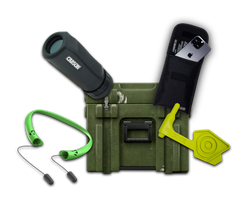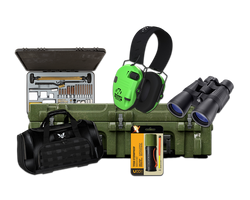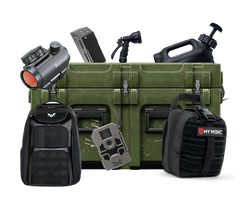Who Made the First Lever Action Rifle?
Table of Contents
- Introduction
- Early Concepts of Lever Action Firearms
- Key Figures in the Development of the First Lever Action Rifle
- The Evolution of Lever Action Rifles
- Impact of the Lever Action Rifle on Hunting and Military Engagements
- The Legacy of the Lever Action Rifle Today
- Conclusion
- FAQ
The history of firearms is filled with innovation and ingenuity, but few developments have had as lasting an impact on the world of shooting as the lever action rifle. This remarkable design revolutionized not only the way firearms were made but also how they were used in various contexts, from hunting to military applications. But who made the first lever action rifle, and what led to its creation? In this blog post, we will take a deep dive into the origins of the lever action rifle, exploring the key figures, technological advancements, and historical contexts that contributed to its development.
Introduction
Imagine a time when the only option for a shooter was a single-shot musket, requiring painstaking reloads after every shot fired. This was the reality for soldiers and hunters before the invention of the lever action rifle. The demand for a more efficient firing mechanism led to a flurry of innovation in the early 19th century, culminating in the creation of the lever action rifle, which allowed for rapid firing and reloads without losing sight of the target.
The significance of the lever action rifle cannot be overstated. It became a favorite among military forces, lawmen, and hunters alike. By the end of the 19th century, it had established itself as a staple of American firearms culture. In this blog post, we will uncover the story behind the first lever action rifle, who invented it, and how it evolved over the years. By the end, you will have a comprehensive understanding of the lever action rifle's origins and its impact on shooting sports and military history.
Our journey will cover the following areas:
- The early concepts of lever action firearms.
- The key figures involved in the invention of the first lever action rifle.
- The evolution of lever action rifles through the years.
- The impact of the lever action rifle on hunting and military engagements.
- A look at modern lever action rifles and their relevance today.
Let’s embark on this historical exploration of the lever action rifle and discover the innovators behind this iconic firearm design.
Early Concepts of Lever Action Firearms
The concept of a lever action mechanism is not new; it has roots that date back centuries. Various designs attempted to utilize a lever mechanism to enhance the functionality of firearms, but it wasn't until the early 19th century that the technology began to take shape in a way that would lead to a commercially viable product.
Predecessors to the Lever Action Rifle
Before the advent of the lever action rifle, several inventors explored similar designs. Notable among them was Michele Lorenzoni, an Italian gunmaker credited with creating one of the earliest lever-operated mechanisms in the late 17th century. Lorenzoni designed a flintlock rifle that incorporated a lever to cock the hammer, allowing for a quicker reload than traditional firearms of the time.
Fast forward to the early 19th century, and we see further developments in lever-operated firearms. In 1826, an Italian inventor named Cesar Rosaglio patented a revolver that utilized a lever system to cock the hammer and index the cylinder. This revolver was a significant step toward the development of the lever action rifle, showcasing the potential of lever mechanisms in firearms.
While these early designs were innovative, they lacked the robustness and efficiency that would characterize later lever action rifles. The true breakthrough came with the introduction of metallic cartridges, which provided a more reliable and consistent firing mechanism.
Key Figures in the Development of the First Lever Action Rifle
The journey to the first successful lever action rifle is marked by the contributions of several key figures, each playing an integral role in the development of the technology and the firearms that utilized it.
Walter Hunt and the Volition Rifle
One of the earliest lever action designs came from Walter Hunt, an inventor known for his mechanical aptitude. In 1847, Hunt patented the Volition repeater, which was a complex lever action rifle designed to fire a self-contained cartridge. Although it never reached production due to Hunt's struggles with business, the Volition repeater laid the groundwork for future lever action designs.
Hunt's Volition rifle, with its innovative 12-round magazine, set the stage for later developments. However, it was not until the collaboration with other inventors that the lever action rifle would truly come to life.
The Smith-Jennings Rifle
Lewis Jennings, a machinist who worked with Hunt, made significant improvements to the Volition design, leading to the creation of the Smith-Jennings rifle. This rifle was patented in 1851 and produced by the Robbins & Lawrence Manufacturing Company. Despite its innovative design, the Smith-Jennings rifle faced reliability issues, resulting in limited production.
Benjamin Tyler Henry
Benjamin Tyler Henry, another key figure in the development of the lever action rifle, joined the New Haven Arms Company, founded by Oliver Winchester. Henry played a pivotal role in redesigning the lever action rifle, creating the Henry rifle in 1860. This rifle employed a stronger bolt and a more reliable firing mechanism, allowing it to operate effectively with metallic cartridges.
The Henry rifle was a revolutionary firearm that could hold 15 rounds in its tubular magazine, allowing for rapid firing without the need to reload after each shot. This marked a significant advancement over previous designs, making the Henry rifle the first commercially successful lever action rifle.
The Evolution of Lever Action Rifles
The success of the Henry rifle paved the way for further innovations in the lever action design. Over the years, several manufacturers built upon the principles established by Henry and introduced their variations of the lever action rifle.
The Spencer Repeating Rifle
Before the widespread adoption of the Henry rifle, the Spencer repeating rifle, designed by Christopher Spencer in 1860, played a crucial role during the Civil War. The Spencer rifle featured a removable magazine that allowed soldiers to fire multiple rounds without reloading. While it still required manual cocking after each shot, its design laid the groundwork for future advancements.
The Winchester Model 1866
Following the success of the Henry rifle, Oliver Winchester established the Winchester Repeating Arms Company and introduced the Model 1866, often referred to as the "Yellow Boy." This rifle improved upon the Henry design by adding a loading gate for easier reloading, making it even more user-friendly for hunters and soldiers alike.
The Winchester Model 1873
Often dubbed "the gun that won the West," the Winchester Model 1873 became one of the most iconic lever action rifles in American history. This model incorporated a more robust action capable of handling centerfire ammunition, greatly enhancing its power and versatility. The Model 1873 became incredibly popular among settlers, law enforcement, and military personnel during the westward expansion of the United States.
Impact of the Lever Action Rifle on Hunting and Military Engagements
The lever action rifle's design proved to be a game-changer in both hunting and military applications. Its rapid-fire capability and ease of use made it a preferred choice for various purposes.
Hunting
For hunters, the lever action rifle became an indispensable tool. Its ability to fire multiple rounds quickly without reloading allowed hunters to take down game more efficiently. The introduction of powerful cartridges, such as the .30-30 Winchester, further solidified the lever action rifle's reputation as a reliable hunting firearm.
Military Use
In military settings, the lever action rifle's advantages were evident during the American Civil War and beyond. Soldiers equipped with lever action rifles could fire more rounds in a shorter amount of time compared to their single-shot counterparts. Although not widely adopted by the federal government, state militias and private soldiers often favored the Henry and Spencer rifles, leading to their use in key battles throughout the war.
The Legacy of the Lever Action Rifle Today
While the lever action rifle's prominence in military engagements has diminished with the advent of modern firearms, its legacy continues. Today, lever action rifles are cherished by collectors, hunters, and shooting enthusiasts alike. Manufacturers like Winchester, Marlin, and Henry Repeating Arms continue to produce modern versions of these classic firearms, keeping the spirit of the lever action alive.
Modern Lever Action Rifles
Contemporary lever action rifles offer the same reliability and performance that made their predecessors famous while incorporating modern materials and technologies. Today’s models are available in a wide range of calibers, allowing shooters to choose the ideal firearm for their specific needs.
Lever action rifles also maintain a nostalgic appeal, often evoking memories of the Old West and the rugged individualism that defines American culture. As such, they continue to be popular among hunters and sport shooters who appreciate their unique combination of history and functionality.
Conclusion
The first lever action rifle marked a significant evolution in firearm technology, transforming the way people approached hunting and military engagements. From the early designs of Walter Hunt and Lewis Jennings to the groundbreaking work of Benjamin Tyler Henry, the development of the lever action rifle is a story of innovation, collaboration, and perseverance.
Today, the legacy of the lever action rifle lives on, with modern manufacturers continuing to produce reliable, high-quality firearms that pay homage to their storied past. Whether you are a collector, a hunter, or simply a history enthusiast, the story of the lever action rifle is a testament to human ingenuity and the relentless pursuit of improvement in the world of firearms.
As you explore this fascinating history, consider how the tools we choose can shape our experiences in the great outdoors. If you’re interested in high-quality tactical gear or survival tools to enhance your outdoor adventures, check out Crate Club's Subscription Services for curated monthly gear deliveries tailored to your needs. You can also find a variety of gear options in the Crate Club Shop.
FAQ
Who invented the first lever action rifle?
The first commercially successful lever action rifle was created by Benjamin Tyler Henry in 1860. His design improved upon previous attempts by incorporating a more reliable firing mechanism and a larger capacity magazine.
What was the significance of the Henry rifle?
The Henry rifle was significant because it was the first lever action rifle to achieve commercial success, allowing for rapid firing with a magazine capacity of 15 rounds. Its effectiveness made it popular among soldiers during the Civil War and later among hunters in the American West.
How did the Spencer repeating rifle differ from the Henry rifle?
The Spencer repeating rifle, designed by Christopher Spencer, featured a removable magazine and was used during the Civil War. However, it required manual cocking after each shot, while the Henry rifle allowed for continuous firing without needing to cock the hammer manually.
Are lever action rifles still popular today?
Yes, lever action rifles remain popular among hunters, sport shooters, and collectors. Modern manufacturers continue to produce lever action models, often chambered in a variety of calibers to meet contemporary needs.
What are some modern lever action rifle manufacturers?
Some well-known manufacturers of modern lever action rifles include Winchester, Marlin, and Henry Repeating Arms. These companies offer a range of lever action rifles designed for various applications, including hunting and recreational shooting.
Dela denna artikel



